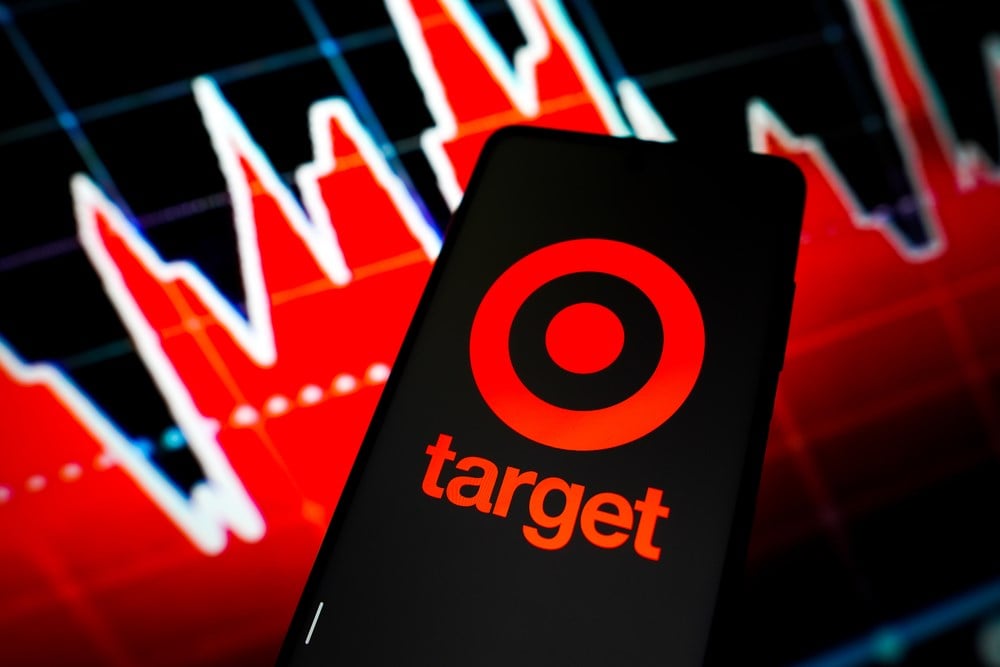
Nowadays, Target Corporation (NYSE: TGT) stores may be wishing their food sections were bigger.
As tough economic conditions take a bite out of discretionary spending, shoppers are limiting their carts to the essentials. Sure, the debt ceiling deal is welcomed news for the U.S. economy, but it offers little relief for American households struggling with inflation and high interest rates.
In turn, retailers are struggling to attract weary consumers — even discount stores like Target. Just ask Dollar General. Its stock is down is -33% this year with this quarter’s profits expected to fall 12%. Dollar Tree stock is down as well.
So with people spending less everywhere, it makes sense that Target is having a tough year. After all, big ticket items like electronics, toys and clothing typically make up a large portion of sales. But has the selloff gone too far?
Last week, Target shares rode an uncharacteristic nine-day losing streak to a 52-week low of $126.75. They are down 11% year-to-date and 50% from their November 2021 peak. For long-term investors, this may be a half-off sale worth attending.
Why Is Target’s Stock Down So Much?
Target’s nine-day slump began when the company announced first-quarter results on May 17th. However, earnings exceeded Wall Street expectations, a weak second quarter outlook disappointed investors. Citing a “tough” macro backdrop, management said it sees comparable store sales declining in the low single digits and earnings per share (EPS) of $1.50 at the midpoint. The Street was hoping for $1.95.
With Target’s inventory issues and aggressive markdowns largely in the rearview mirror, two issues continue to hurt its financials. The first is food inflation. High grocery prices are squeezing out purchases of non-essential items. People that shop at Target for groceries are spending less time weaving through the rest of the store for impulse grabs. Those that buy food elsewhere are skipping a stop at Target for the ‘extras.’
At the same time, Target is battling inflation of its own. The company has been more reluctant than peers to raise prices — but at the expense of profitability. Wages and logistics expenses are up. A disturbing organized theft trend isn’t helping. And with cost pressures expected to persist in the near term, management said it does not foresee a sequential improvement in the Q2 operating margin.
The good news is that Target store traffic isn’t down. In fact, it has increased for 12 consecutive quarters, an impressive stat considering the streak began in the early pandemic days. This shows that Target remains very much relevant in today’s economy. It's just that people are spending less.
How Is Target Adjusting to the Current Environment?
Target is doing what smart retailers do when revenue growth slows — cutting costs and seeking ways to improve operating efficiency. The company plans to slash up to $3 billion from its cost structure over the next few years by simplifying the business. A greater use of digital tools that streamline in-store workflows and home delivery will play a key role.
If these initiatives continue to gain traction, the market could be pleasantly surprised by Target’s Q3 and Q4 results — especially if the holiday shopping season is spirited.
Besides the Q1 EPS beat, the market ignored that Target’s full-year guidance was left unchanged. The company is still forecasting comparable sales to be flat and EPS of $7.75 to $8.75. A Q1 beat plus a soft Q2 outlook (while keeping fiscal 2024 guidance unchanged) should’ve been viewed as a wash. Instead, the stock gapped down — en route to a visit to oversold territory.
Is Target’s Stock Undervalued?
Based on the consensus estimate for fiscal 2024 earnings, Target’s P/E ratio is 16x. Over the last five years, it has traded at an average multiple of 19x. The stock also appears to be a good value when you consider it pays an above-sector 3.2% dividend — a dividend that has been hiked for 51 straight years.
As reliable as the growing dividend is the fact that consumers can still get food and other staples at affordable prices at Target. The conveniences of online shopping, curbside pickup and easy returns are also advantages. If and when wage inflation catches up to retail inflation, American budgets will have more room for discretionary items like televisions and home goods. Target’s appeal as a one-stop shopping destination would be rediscovered.
This means that while Target manages macro (and not company-specific) headwinds, investors have an opportunity to get shares of one of the most beloved retailers at a discount. Call it an early Black Friday event.
A Q2 beat followed by a brighter Q3 outlook would be the ideal formula for igniting a turnaround. On August 16th, we’ll find out if Target hits this bullseye.






